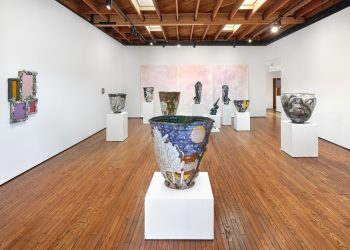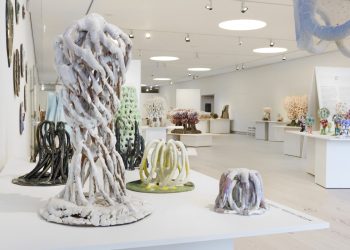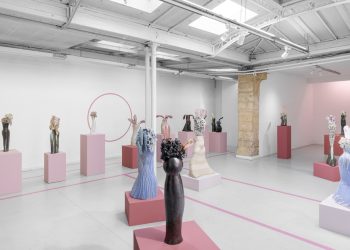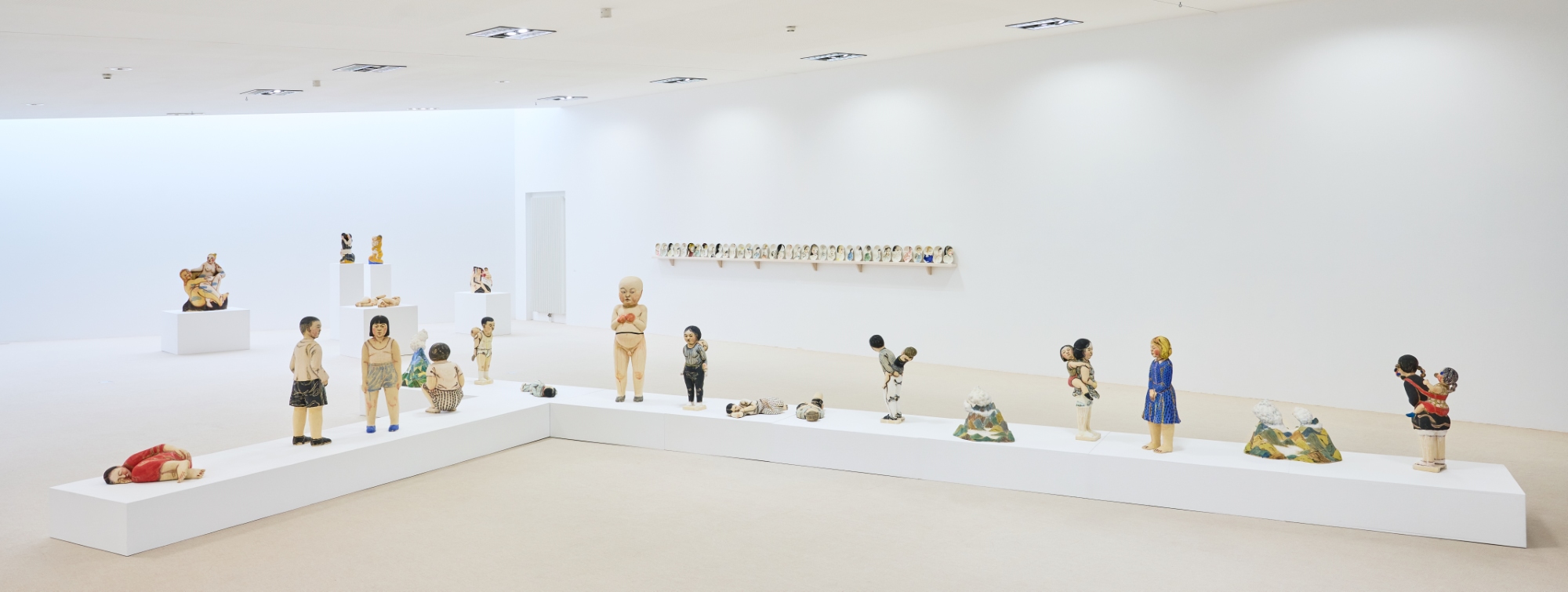
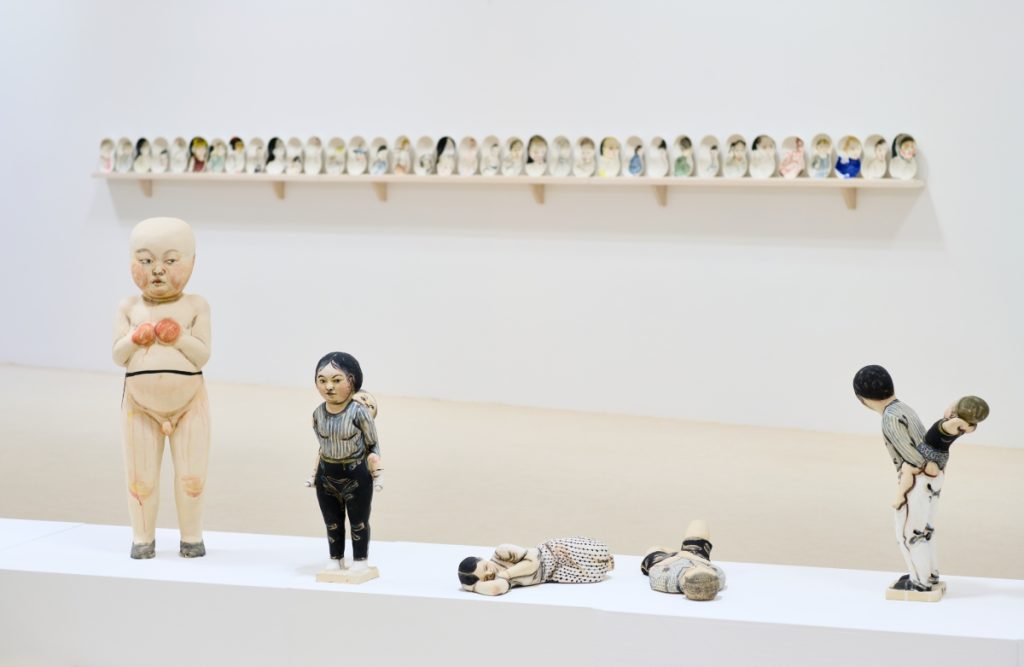
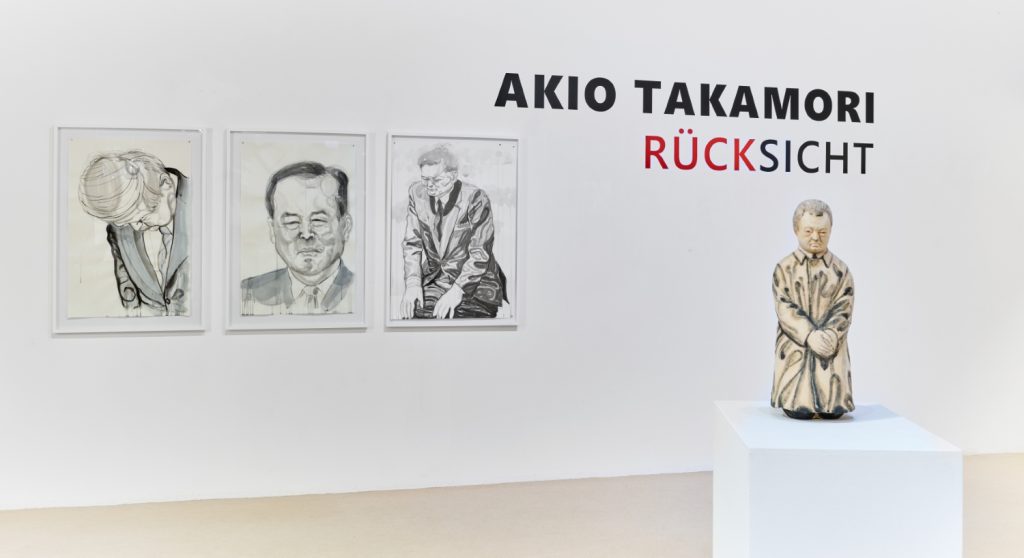
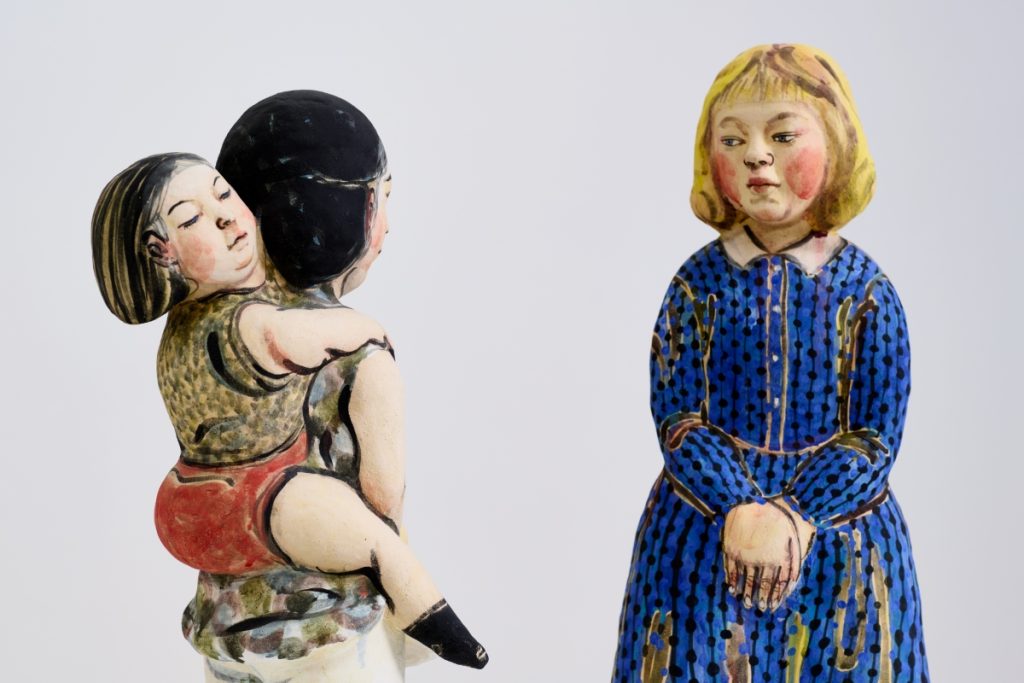
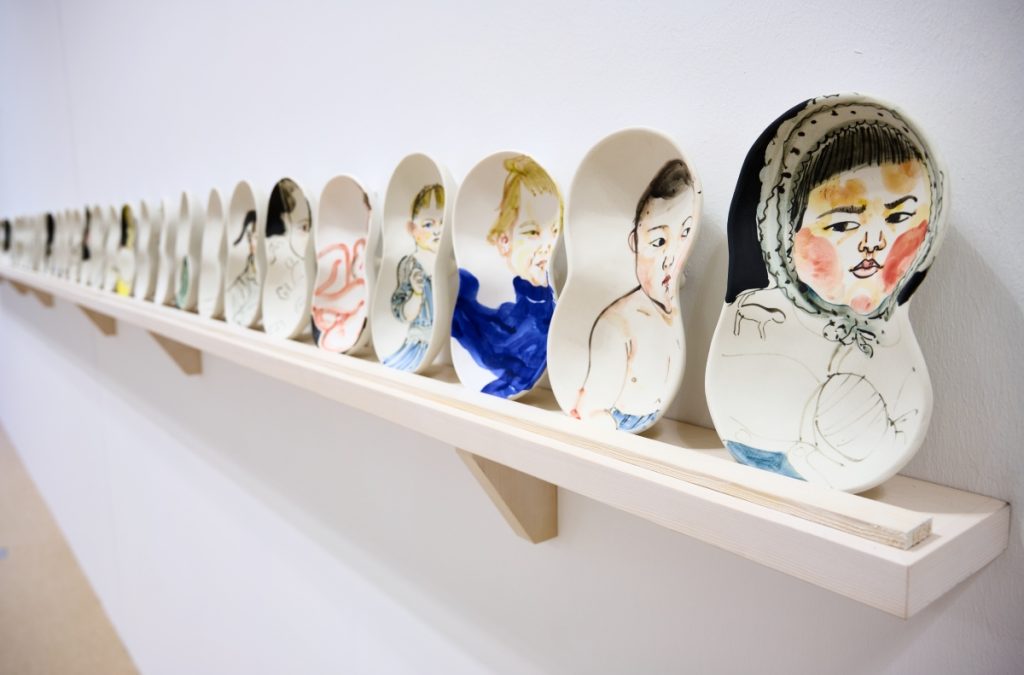
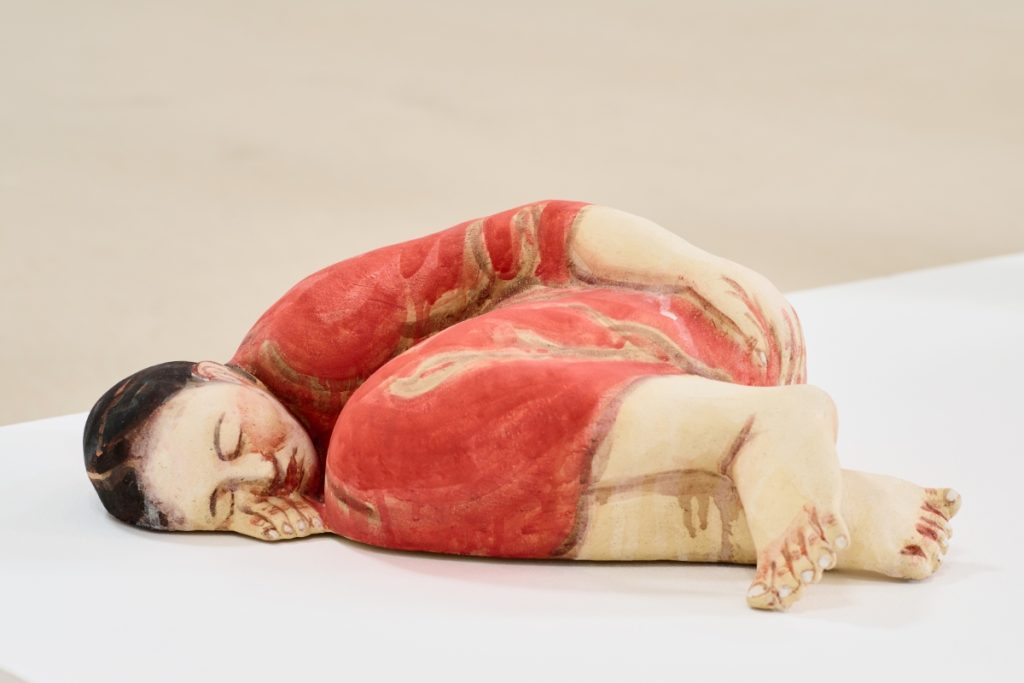
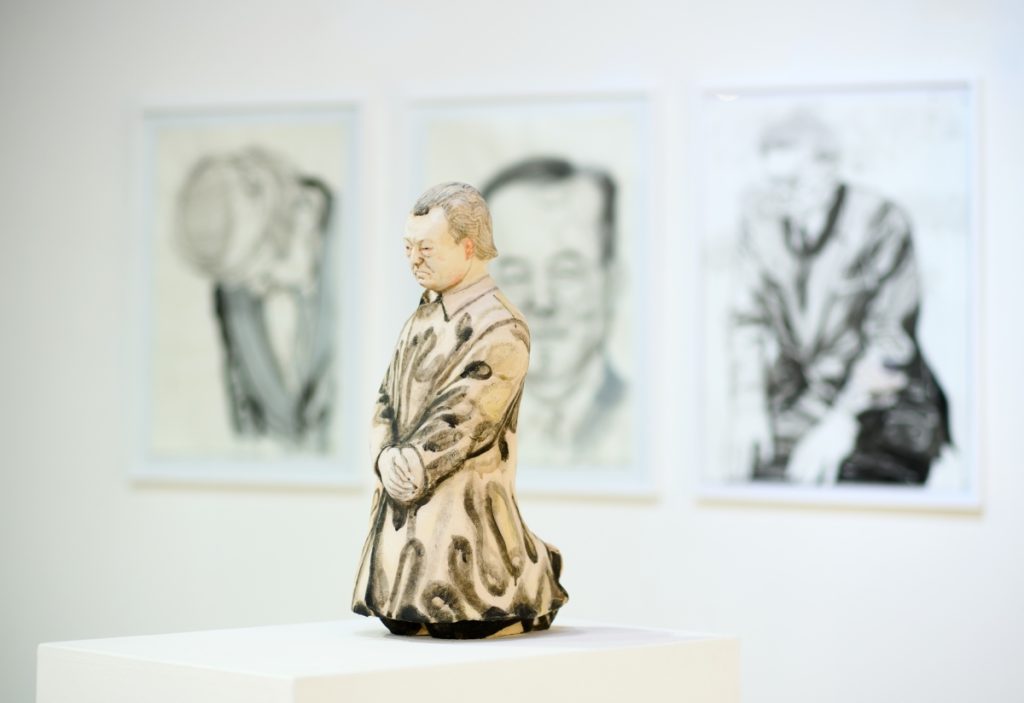
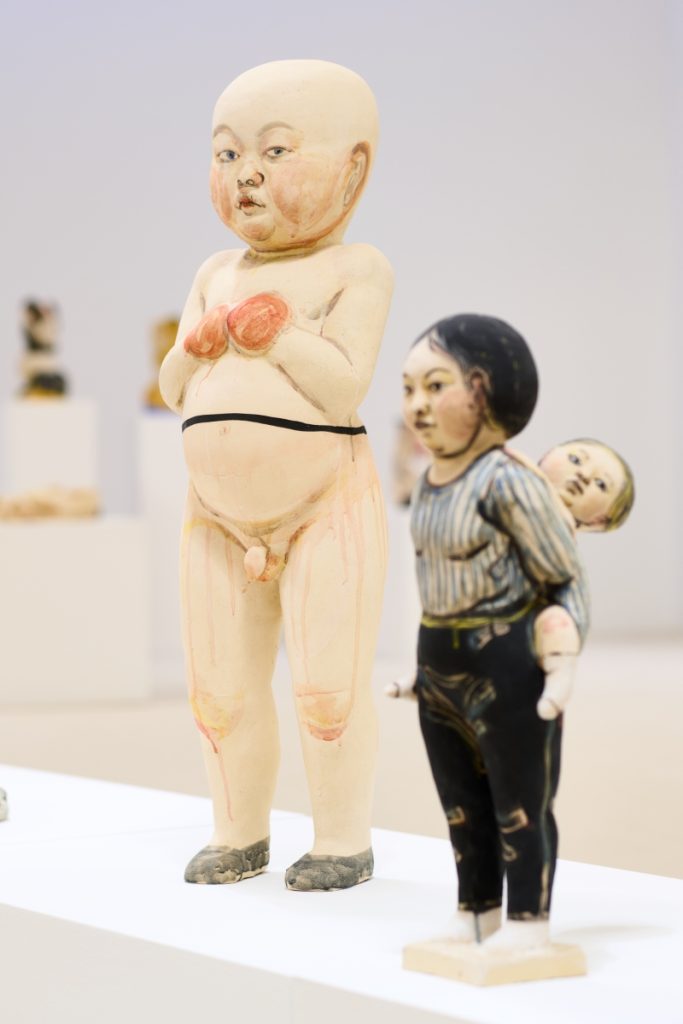
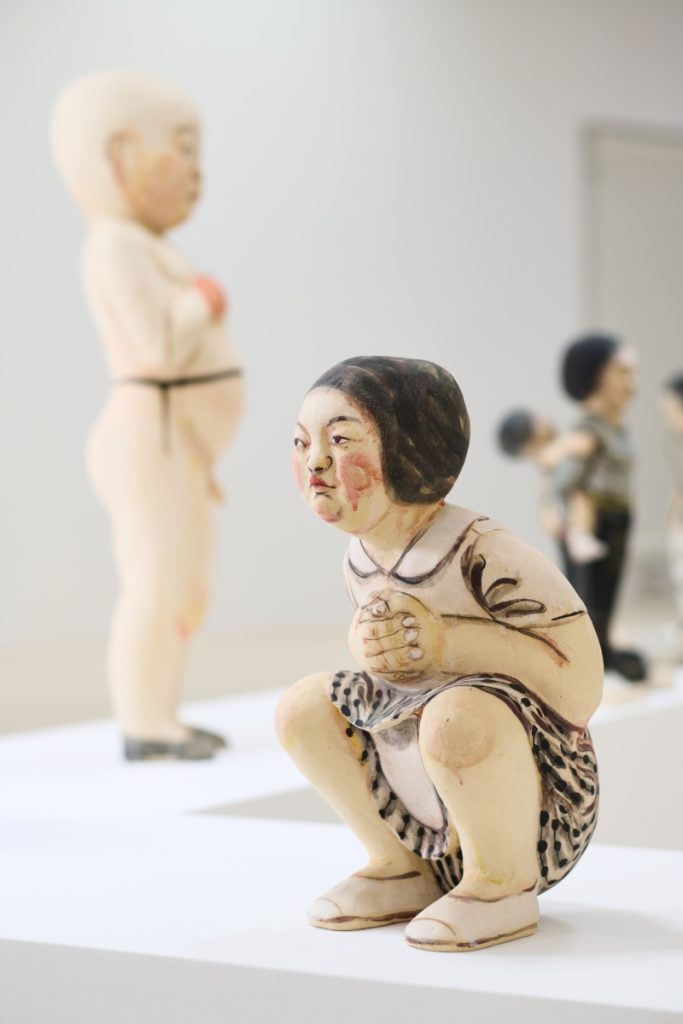
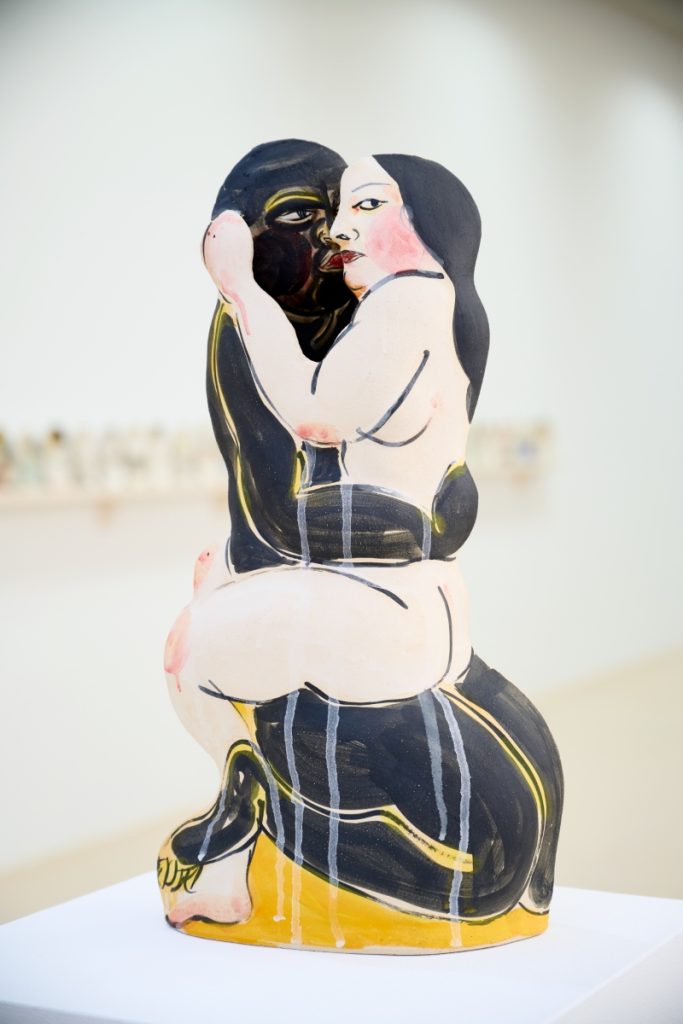
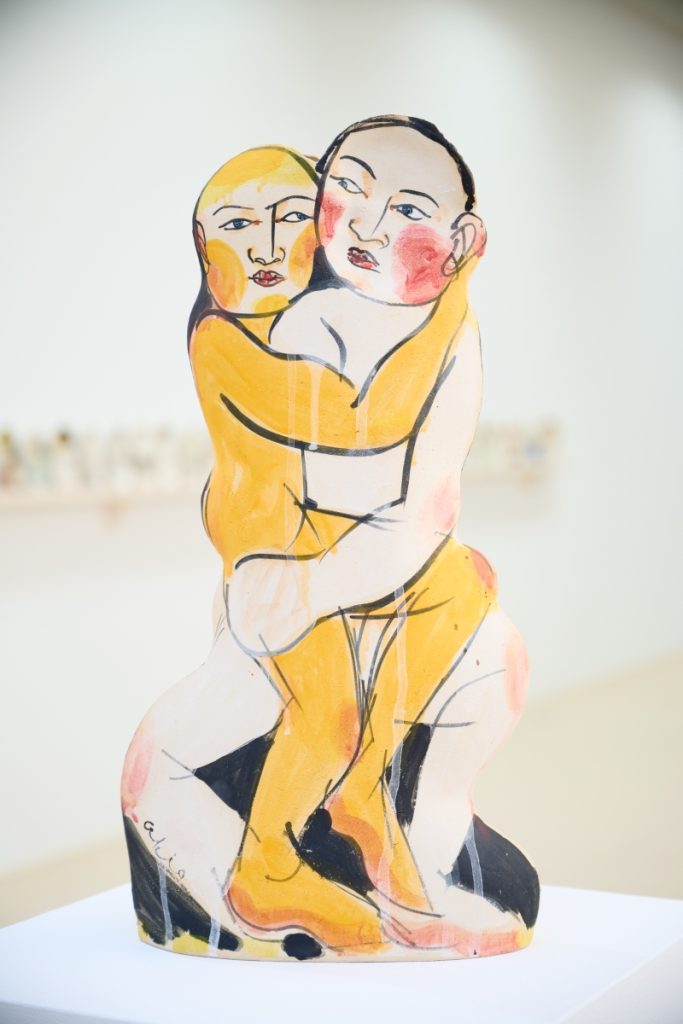
Akio Takamori: Consideration is on view at Keramikmuseum Westerwald, Höhr-Grenzhausen
January 26 – April 6, 2024
It was migration to another continent that sparked an interest in his culture. The prints of Shikō Munakata and the erotic images of Kitagawa Utamaro helped Takamori to find his own artistic language. He became aware of his roots only from a distance and developed a keen sense of the peculiarities he had to harmonize in his new life.
Akio Takamori was born in Nobeoka, Miyazaki, Japan, in 1950. During his apprenticeship in traditional Japanese pottery, he met the American ceramist Ken Ferguson, who invited him to study with him. Takamori subsequently moved to the USA in 1974. Ferguson also encouraged the timid student at the Kansas City Art Institute to work figuratively. Initially, Takamori used the vessel as a basis. He later expanded his range of media to include drawings and prints. Takamori continued his studies at Alfred University (NY), where he received his MFA degree in 1978. This was followed by various artist residencies at the Archie Bray Foundation in Montana, the European Ceramic Workcentre in the Netherlands, and the Kecskemét International Ceramic Studios in Hungary. From 1993 to 2014, he taught at the University of Washington.
Classical works from European art history often formed a starting point in Takamori’s work. But typical Asian depictions, such as the so-called karako – images of children playing on Japanese pottery or carved ivory figures embodying innocence and joy – were also a constant source of inspiration. The sibling series, where a large child carries the smaller one, began with a profoundly moving image from the series Photographing the Bomb by Japanese photographer Yosuke Yamahata.
The theme of complementary opposites can be found in all of his works. He never lost himself in heterogeneous stereotypes but instead explored the complexity of identities. Man and woman, child and adult, mountain and cloud, bore and carried: Takamori sought balance and the overcoming of controversies. He deliberately never fixed the size of the figures. As a viewer, you sometimes have to bow down to enter into dialogue with the object. Takamori consistently paid attention to duality, not only in the depiction but also in the material. Sensual calligraphic brushstrokes and warm watercolor tones can be found on hard stoneware. The speed and liveliness of the painting are combined with the carefully constructed and slow-fired ceramics. Akio Takamori explored his identity between two contrasting worlds very sensitively. “My interest is in humanity,” said the artist, showing himself to be a poetic mediator in an increasingly polarised society. His message proves to be touchingly optimistic and full of hope.
Shortly after his early death in January 2017, the James Harris Gallery presented the exhibition Apology / Remorse, in which Takamori, inspired by media images, thematized the gesture of public apology. These striking and highly contemporary works depict the Japanese ritual of restoring social harmony while simultaneously expressing the human desire to heal or overcome history. Some of these last works will also be presented at the Keramikmuseum Westerwald exhibition, organized in cooperation with the Kunstforum Solothurn.
Text by Nele van Wieringen.
Contact
kontakt@keramikmuseum.de
Keramikmuseum Westerwald
Lindenstraße 13
56203 Höhr-Grenzhausen
Germany
Photos by Helge Articus



